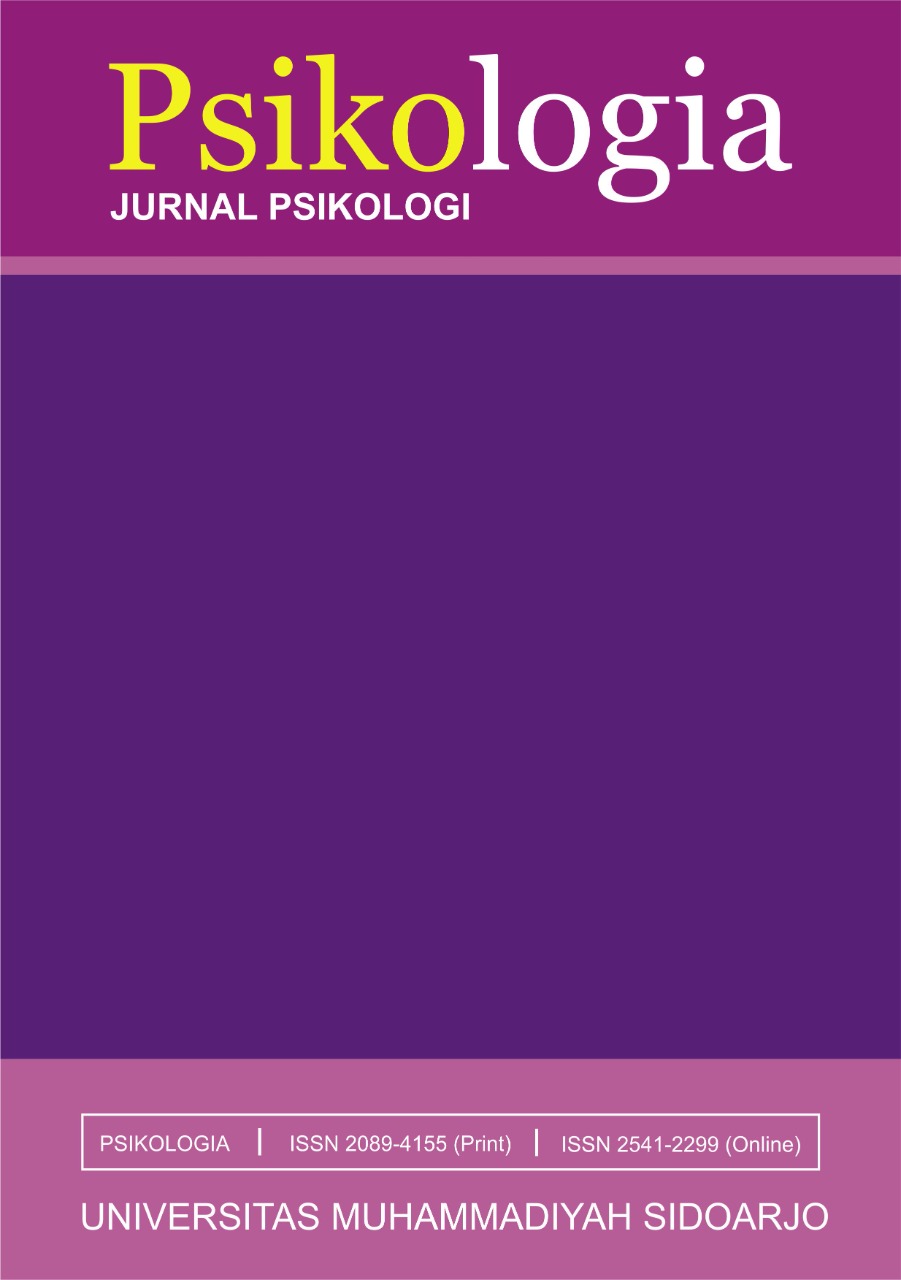Aspects of Manubura Village Weavers' Fighting Power in Facing the Digital Age
Aspek Daya Juang Penenun Desa Manubura Dalam Menghadapi Era Digital
DOI:
https://doi.org/10.21070/psikologia.v10i1.1775Keywords:
Adversity Quotient, Era Digital, WeaverAbstract
In the current era of globalization, we are faced with changing times where everything is digital. Weavers are required to struggle to face the current digital era. This research was conducted with the aim of finding out the fighting power of weavers in facing the digital era. This type of research is descriptive qualitative with observation and interview research methods. The results of this research show that weavers' fighting power in facing the digital era is influenced by two aspects. Namely the aspect of control (control) and the aspect of origin and ownership or origin and recognition.
Highlights:
- Adaptation to Digitalization – Weavers must adapt to digital tools to stay competitive.
- Control Aspect – The ability to manage resources and technology influences their success.
- Ownership & Recognition – Acknowledging their origins and cultural identity strengthens their resilience.
Keywords: Adversity Quotient, Era Digital, Weaver
References
Amelia, P., & Purwaningsih, H. (2021). Desain Komik Digital Cerita Rakyat Desa Arjowilangun. Brikolase: Jurnal Kajian Teori, Praktik dan Wacana Seni Budaya Rupa, 13(2), 1-21.
Aisya, Andi, dkk. (2022). Digital Marketing dan Kesejahteraan Ekonomi bagi Penenun Sabbe Desa Pokkana Kabupaten Wajo. Jurnal Penelitian dan Pengembangan Sains dan Humaniora, 6(1), 26-34.
Dewi, E., Ayunda, D., Andalas, P., & Lede, Y. (2024). Pergeseran Penghidupan dan Agensi Perempuan. Jurnal Ilmiah Hubungan Internasional, 1(1), 174-188.
Destiarani, S. (2018). Daya Juang Guru Honorer. Psikoborneo, 6(1), 59-66.
Elistia, E., Amalia, L., & Rojuaniah, R. (2022). Faktor Keberhasilan Wirausaha Desa pada Produk Kearifan Lokal. Eqien: Jurnal Ekonomi dan Bisnis, 9(2), 394-825.
Hunga, A. I. R., Candraningrum, D., & Dhewy, A. (2020). Ekofeminisme: Pandemi Covid-19, Resiliensi, dan Regenerasi Kapitalisme. Jurnal Ekofeminisme, 1(1), 7-8.
Kesuma. (2018). Eksistensi Komunitas Penenun Bugis (Sebuah Refleksi Sosio-Kultural Masyarakat Wajo). Jurnal Walasuji, 9(2), 277-288.
Lasmono. (2007). Tinjauan Tingkat Adversity Quotient. Indonesia Psychological Journal, 17(1), 63-68.
Sonjaya, R., & Iskandar, T. P. (2022). Penerapan Kurikulum Merdeka Belajar-Kampus Merdeka di Prodi Ilmu Komunikasi FISIP UNPAS Bandung. Dalam Membaca MBKM dalam Ilmu Komunikasi (pp. 33-38). Penerbit UNPAS.
Stoltz, P. G. (2007). Adversity Quotient (Cetakan Ketujuh) (T. Hermaya, Penerjemah). Jakarta: PT Gramedia Widiasarana Indonesia.
Sumardin, dkk. (2020). Peran Penenun dalam Upaya Mempertahankan Tenunan Daerah (Studi di Desa Bantuatas Barat, Kecamatan Batuatas, Kabupaten Buton Selatan). Jurnal Kesejahteraan dan Pelayanan Sosial, 1(2), 116-125.
Tang, G. L., Giyanto, B. G., & Rahayu, N. S. (2023). Strategi Peningkatan Kompetensi Penenun dalam Mendukung Pembangunan Sektor Industri pada Sentra Tenun Ikat Gunung Mako, Desa Alor Besar, Kecamatan Alor Barat Laut, Kabupaten Alor, Provinsi NTT. Journal of Public Policy and Applied Administration, 10(3), 103-129.
Tuwu, dkk. (2020). Perempuan Penenun: Dari Budaya Kerja hingga Peningkatan Kesejahteraan Keluarga. Etnoreflika: Jurnal Sosial dan Budaya, 9(3), 283-298.
Wardani, & Saidiyah. (2016). Daya Juang Mahasiswa Asing. Psympathic: Jurnal Ilmiah Psikologi, 3(2), 213-224.
Widyaningrum. (2007). Adversity Intelligence dan Prestasi Belajar Siswa. Jurnal Psikologi Proyeksi, 2(2), 50-58.






